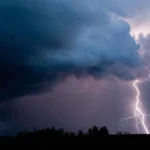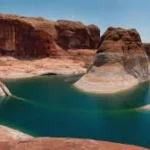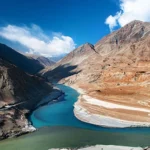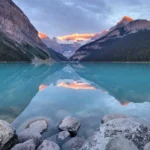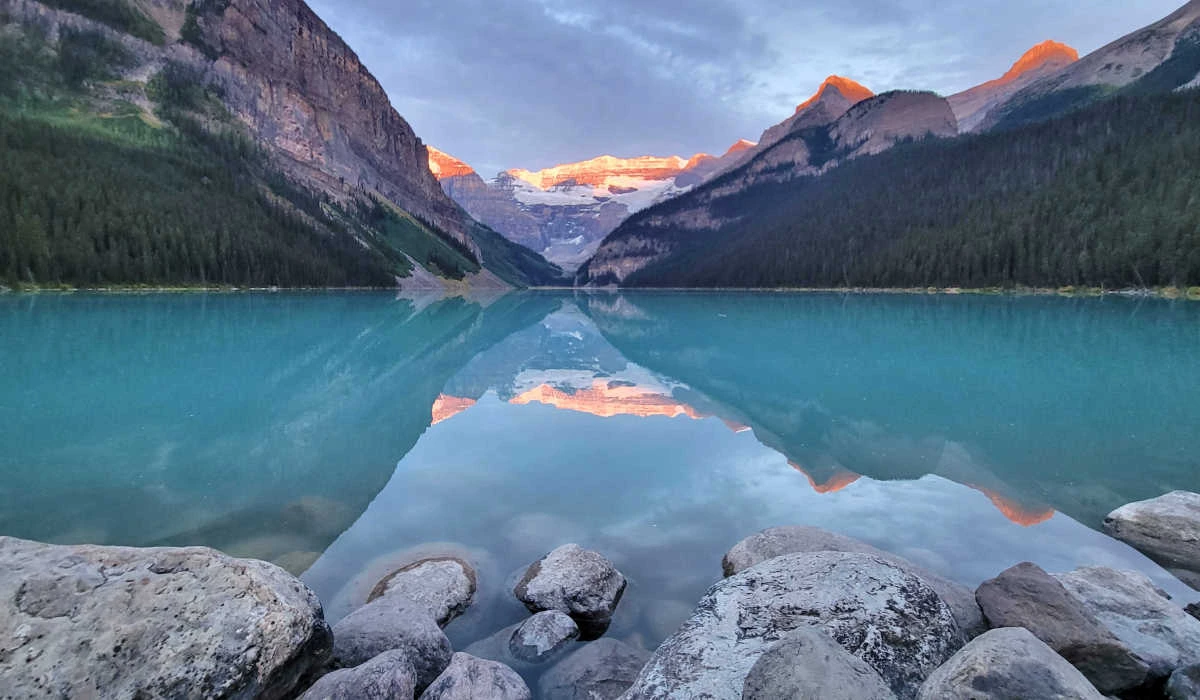
Nestled in the heart of the Canadian Rockies, Banff National Park is a breathtaking blend of towering peaks, turquoise lakes, ancient glaciers, and rich cultural heritage. As Canada’s first national park and one of the most visited in North America, Banff has captivated explorers, nature lovers, and scientists for over a century. But beyond its postcard-perfect scenery lies a wealth of fascinating facts—some historic, some scientific, and others simply awe-inspiring. In this post, we dive into 25 unique and verified facts about Banff National Park, each packed with measurable details, records, and stories that reveal the park’s true depth and significance. Whether you’re planning a visit or just curious about one of the world’s most iconic natural wonders, this list will give you a whole new appreciation for Banff.
1. Canada’s First National Park
Banff National Park was established in 1885, making it the first national park in Canada and the third in the world. Originally named Rocky Mountains Park, it began as a 26-square-kilometer reserve around the hot springs discovered on Sulphur Mountain. The park was created under the Rocky Mountains Park Act and later expanded to over 670 square kilometers. It was renamed Banff National Park in 1930, after the nearby train station named for Banffshire, Scotland.
2. UNESCO World Heritage Site
In 1984, Banff National Park was designated a UNESCO World Heritage Site as part of the Canadian Rocky Mountain Parks. This recognition highlights the park’s ecological significance, geological features, and outstanding natural beauty. The designation also ensures international efforts toward conservation and sustainable tourism.
3. Home to Hundreds of Glaciers
Banff National Park, along with neighboring Jasper National Park, contains several hundred glaciers estimated to be between 45 and 120 million years old. Notable glaciers include Peyto, Bow, Crowfoot, and Athabasca. Visitors can view around 100 glaciers from the Icefields Parkway, a scenic highway connecting the two parks.
4. Glacial Lakes with Striking Colors
The park’s lakes, such as Lake Louise and Moraine Lake, are renowned for their vivid turquoise and blue hues. These colors result from glacial silt—fine sediment created by ice grinding against rock—which remains suspended in the water and reflects sunlight. The phenomenon creates stunning visual effects that change with light conditions.
5. Extensive Hiking Trails
Banff National Park offers over 1,000 miles (approximately 1,600 kilometers) of maintained hiking trails. These trails cater to all skill levels and are also used for biking and horseback riding. Popular hikes include the Lake Agnes Tea House trail and the Plain of Six Glaciers.
6. Highest Towns in Canada
Lake Louise, located within Banff National Park, is the highest town in Canada at an elevation of 5,200 feet (1,585 meters). The town of Banff follows closely at 4,600 feet (1,402 meters). These elevations contribute to the park’s alpine climate and stunning mountain views.
7. Canada’s Longest Cave
Castleguard Cave, located in the northern part of Banff National Park, is the longest cave in Canada. It stretches over 66,700 feet (20,330 meters) and reaches depths of 1,260 feet (384 meters). The cave is formed in limestone and is still being explored and surveyed.
8. Endangered Woodland Caribou
Banff National Park is home to the endangered woodland caribou, a species of reindeer native to North America. Fewer than 200 individuals remain in the park, and conservation efforts are underway to reintroduce and protect this iconic species.
9. Popular Tourist Destination
Banff National Park attracts over 4.5 million visitors annually, making it the most-visited national park in Canada. Tourists come from around the world to experience its natural beauty, wildlife, and recreational activities.
10. Highest Peak: Mount Forbes
Mount Forbes is the tallest mountain in Banff National Park, standing at 11,851 feet (3,612 meters). It is the fifth-highest peak in Alberta and offers challenging climbs and breathtaking views for experienced mountaineers.
11. Largest Lake: Lake Minnewanka
Lake Minnewanka is the largest lake in Banff National Park, covering 22 square kilometers (8.5 square miles). It is also the second-longest lake in the Canadian Rockies. The lake was formed by damming the Cascade River in the early 1900s and expanded in the 1940s.
12. Golf Courses in the Mountains
Banff National Park features several golf courses set against stunning mountain backdrops. Notable courses include Greywolf, Eagle Ranch, and Kananaskis. These courses offer a unique blend of sport and scenery.
13. Indigenous Heritage
The land within Banff National Park is the traditional territory of Indigenous groups including the Stoney Nakoda, Blackfoot Confederacy, Tsuut’ina, Ktunaxa, Secwépemc, Mountain Cree, and Métis. These communities have lived in and stewarded the region for thousands of years.
14. Historic Banff Springs Hotel
The Fairmont Banff Springs Hotel, built in 1888, is a landmark luxury hotel designed in Scottish baronial style. Known as the ‘Castle in the Rockies,’ it has hosted royalty, celebrities, and dignitaries, and remains a symbol of hospitality and heritage.
15. Cave and Basin National Historic Site
The Cave and Basin site marks the birthplace of Canada’s national parks system. It features natural thermal springs and historic structures, offering insights into the park’s origins and conservation history.
16. Wildlife Diversity
Banff National Park is home to over 1,600 species of plants and animals. Iconic wildlife includes grizzly bears, elk, moose, mountain goats, and wolves. The park’s varied ecosystems support rich biodiversity.
17. Icefields Parkway
The Icefields Parkway is a 230-kilometer (143-mile) scenic highway connecting Banff and Jasper National Parks. It offers access to glaciers, waterfalls, and panoramic mountain views, making it one of the world’s most beautiful drives.
18. Lake Louise Gondola
The Lake Louise Gondola provides access to alpine viewpoints and hiking trails. It ascends to an elevation of 6,850 feet (2,090 meters), offering panoramic views of Lake Louise and surrounding peaks.
19. Banff Upper Hot Springs
The Banff Upper Hot Springs have been a popular attraction since the 1880s. The thermal waters, heated geothermally, reach temperatures of 37–40°C (98–104°F) and are rich in minerals, offering relaxation and therapeutic benefits.
20. Climate and Seasons
Banff National Park experiences a subarctic climate with cold winters and mild summers. Average winter temperatures range from -15°C to -5°C (5°F to 23°F), while summer temperatures range from 7°C to 22°C (45°F to 72°F).
21. Avalanche Safety and Monitoring
Due to its mountainous terrain, Banff National Park has an active avalanche monitoring and control program. The park uses explosives and remote sensors to manage avalanche risk and ensure visitor safety.
22. Banff Centre for Arts and Creativity
Founded in 1933, the Banff Centre is a world-renowned institution supporting arts, culture, and leadership. It hosts residencies, performances, and workshops, contributing to the park’s cultural landscape.
23. Sustainability Initiatives
Banff National Park implements sustainability measures including wildlife corridors, waste reduction programs, and eco-friendly transportation options. These efforts aim to balance tourism with environmental preservation.
24. Seasonal Festivals
Banff hosts seasonal festivals such as SnowDays in January and the Banff Mountain Film Festival in the fall. These events celebrate winter sports, adventure, and environmental storytelling.
25. Geological History
The mountains in Banff National Park are between 145 and 600 million years old, with some dating back to the Precambrian era. The park’s geology includes sedimentary rock formations shaped by tectonic activity and glaciation.
Frequently Asked Questions about Banff National Park
1. Where is Banff National Park located?
Banff National Park is situated in western Canada, within the province of Alberta. It lies in the heart of the Canadian Rockies, approximately 128 kilometers (80 miles) west of Calgary. The park encompasses the towns of Banff and Lake Louise and is part of a larger UNESCO World Heritage Site.
2. Do I need a passport to visit Banff?
Yes, if you’re traveling from outside Canada, a valid passport is required to enter the country. U.S. citizens must present a passport when crossing the border into Canada and returning to the U.S. Visitors from other countries should check visa requirements before traveling.
3. What is the entrance fee for Banff National Park?
A daily park pass is required for entry and costs approximately CAD $11 per adult, $22 for a family/group, and is valid until 4:00 PM the following day. The pass also grants access to other national parks like Jasper, Yoho, and Kootenay. For longer stays, the Annual Discovery Pass offers better value and covers all Canadian national parks and historic sites.
4. What is the best time to visit Banff?
Banff is a year-round destination. Summer (June–August) is ideal for hiking, sightseeing, and lake activities, while winter (December–March) offers skiing, snowboarding, and ice skating. Fall (September–October) features vibrant foliage, and spring (April–May) is great for wildlife viewing and fewer crowds.
5. What is the weather like in Banff?
Banff has a subarctic climate with cold winters and mild summers. Summer temperatures range from 20°C to 25°C (68°F to 77°F), while winter temperatures can drop to -20°C (-4°F) or lower. Weather can change rapidly due to mountain conditions, so layered clothing is recommended.
6. Are pets allowed in Banff National Park?
Yes, dogs are allowed on most trails during summer unless otherwise posted. Pets must be leashed and under control at all times, and owners are required to clean up after them. Pets cannot be left unattended or tied to objects in public areas.
7. What is the “Red Chair Experience”?
The Red Chair Experience is a Parks Canada initiative where red Adirondack chairs are placed in scenic locations throughout the park. Visitors are encouraged to relax and enjoy the views. Popular red chair spots include Valleyview Picnic Area, Cave and Basin Historic Site, and Silverhorn Creek Campground.
8. How long should I stay in Banff?
A recommended stay is 3 to 5 days to explore major attractions like Lake Louise, Moraine Lake, the Icefields Parkway, and Banff town. Longer stays allow for hiking, wildlife viewing, and day trips to nearby parks like Jasper or Yoho.
9. Can I see the Northern Lights in Banff?
Yes, Banff is a good location to view the Aurora Borealis, especially from September to April. The best viewing spots include Lake Minnewanka, Peyto Lake, and Vermilion Lakes, away from city lights. Clear, dark nights increase visibility.
10. Are there hot springs in Banff?
Yes, the Banff Upper Hot Springs are a popular attraction. The mineral-rich waters are naturally heated to 37–40°C (98–104°F) and offer therapeutic benefits. The site includes changing facilities, a gift shop, and stunning mountain views.
